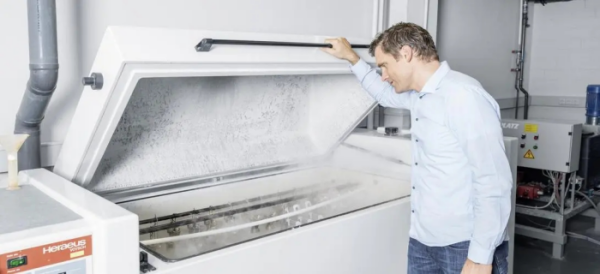
Salt spray testing process:
1. Clean the sample
The test specimen should be thoroughly cleaned before the test. The cleaning method depends on the material, surface, and pollutants, but no grinding or solvent that can affect the surface of the sample should be used. Generally, ethanol cleaning or magnesium oxide solution can be used for cleaning. After cleaning the sample, it should be noted that it should not be contaminated again due to improper placement.
2. Placing samples
(1) Placing samples on shelves made of inert non-metallic materials
(2) The test pieces shall be placed so that they are not sprayed directly by the spray
(3) The arrangement of the samples shall ensure that the spray falls freely on the test piece of the salt spray test, and shall not prevent the test liquid from falling freely
(4) The exposure angle of the sample surface in the spray chamber is also important. The sample in the salt spray chamber should be 20 degrees from the vertical as far as possible. To test the main surfaces of special parts in many directions together, multiple samples can be placed, and the spray of salt water must cover each main surface.
(5) The sample cannot be moved until the salt spray test is completed.
3. Boot Test
Record the initial time of the test, and prohibit opening the cover or terminating the salt spray test during the test process.
4. End of experiment
Record the time and measure the collection volume, pH, specific gravity, and other information of the collected solution.
5. Sample inspection and evaluation
When the room temperature is reduced to a suitable temperature and there is basically no fog, the product can be taken out. Rinse the surface of the product with warm water not exceeding 38 degrees Celsius for 1 minute, then blow the surface of the product clean with an air gun. Place it at room temperature, wear clean cotton gloves, and inspect the appearance of the sample under 1000LUX light to evaluate the salt spray test results. The evaluation of test results varies depending on the requirements of different standards. The increase in test temperature from 35 ℃ to 50 ℃ is the conclusion of comparing copper salt accelerated acetate spray test with neutral salt spray test. In addition, copper salt accelerated corrosion process increased its corrosion rate by 7-8 times, which is 2-3 times faster than acetate spray test. Therefore, using copper salt accelerated acetate spray testing to assess the salt spray corrosion resistance quality of product coatings can obtain results in a relatively short period of time.
